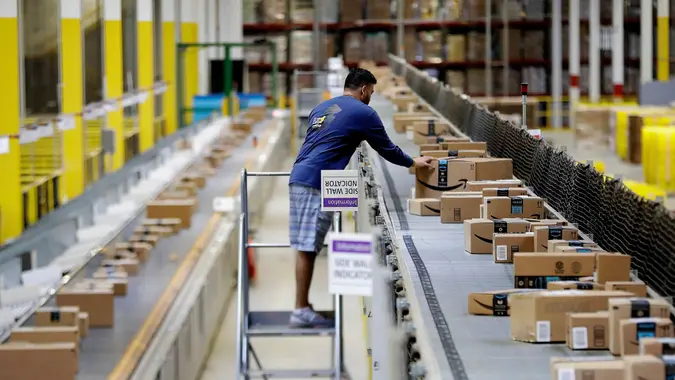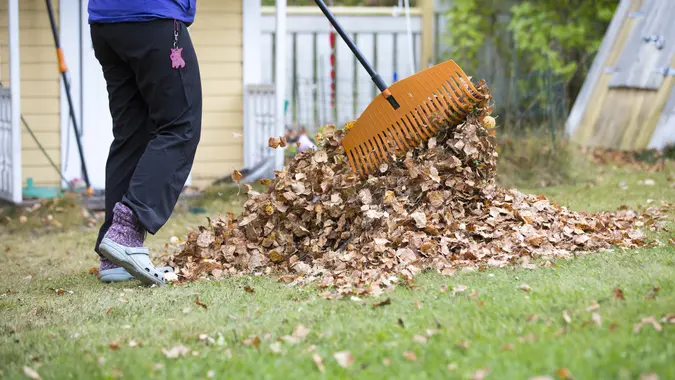5 Side Gigs the Middle Class Won’t Be Able To Afford To Start in Less Than a Decade

Commitment to Our Readers
GOBankingRates' editorial team is committed to bringing you unbiased reviews and information. We use data-driven methodologies to evaluate financial products and services - our reviews and ratings are not influenced by advertisers. You can read more about our editorial guidelines and our products and services review methodology.

20 Years
Helping You Live Richer

Reviewed
by Experts

Trusted by
Millions of Readers
According to a recent survey from MyPerfectResume, 71% of American workers rely on a secondary income stream to get by financially. When it comes to secondary income sources, 39% of respondents relied on freelance work and 24% on investments.
The top motivating factors for a supplemental income stream were paying off debt (42%), saving for major financial milestones (37%) and covering basic living expenses (35%). While many popular side gigs have provided Americans with a steady income stream over the past few years, the unfortunate reality is that some of these options could disappear in the future.
These are five side gigs that the middle class won’t be able to afford to start in less than a decade or so.
1. Gig Economy Services
“Uber, Lyft, DoorDash, and other services that require a car are already impossible to start,” said Mabel Oza, an adjunct professor at the University of Illinois at Chicago for blockchain and cryptocurrencies and the founder of ChaChing Social. “With the car shortage from the pandemic, the rising gas prices, and the fat cuts these services take from drivers, it wouldn’t make financial sense to pursue these side gigs.”
While making money from ride-sharing and food delivery services has become popular, it will be nearly impossible for the middle class to get started with these gigs in a decade or even less since the costs are simply too high, and the average person may not qualify.
This would impact the following types of gig economy services:
- Rideshare driving: With the standards for approved vehicles increasing, a middle-class person may not have the funds to invest in the right car to get accepted.
- Food delivery: With soaring insurance costs and the cost of owning a vehicle shooting up overall, the average person may not even get accepted on these platforms.
“This is especially true for Uber Black, which requires specific car makes and models and bond requirements for the driver,” Oza added an additional warning.
The harsh reality is that unless you deliver food on a bicycle, you may not be able to get approved for many side gigs in this category in a decade unless you’re willing to take on debt to finance a vehicle that’s out of your price range.
2. E-Commerce
“It’s great that people can design inventory and start selling it within a day with tools like Etsy, print-on-demand and generative AI,” remarked Oza. “However, the margins don’t justify marketing products; it’s hard to profit after promotions and advertising.”
E-commerce stores are becoming more expensive with time, and this side hustle may be out of reach for middle-class individuals in the next ten years. There’s also a significant upfront investment required when it comes to the time and research associated with understanding the search algorithm and making sales on a platform like Etsy or Shopify.
To make matters worse, with increasing competition and rising costs, the average person may not be able to start in this side gig unless they have significant capital to allocate towards the venture.
3. Short-Term Rentals
Oza noted that short-term rental businesses like VRBO or Airbnb are already challenging to enter because of the high interest rates and elevated housing prices.
While many hopeful real estate investors have been on the sidelines waiting for interest rates to drop to make mortgage payments more affordable, the reality is that this side hustle could face additional hurdles and challenges.
“Even when the interest rates drop, dealing with complex and evolving regulations around short-term rentals will be expensive, which vary from state to state and country to country,” Oza elaborated.
There’s also a significant risk with states or countries banning short-term rentals, which could force investors to sell the property below market value.
4. Flipping Houses
Like short-term rentals, flipping houses is another real estate side hustle that could disappear in the next few years.
The logic of this venture is that you invest in a home that requires some maintenance work to fix and sell for a substantial profit. However, with soaring housing prices and higher interest rates, getting into this venture is becoming more complex.
A regular middle-class person may not have the capital required to put a down payment on a home and the additional resources to spend on improving it. With rising raw material costs and higher interest rates, it may be challenging to profit from this kind of project.
5. Freelance Photography
Freelance photography is a popular side gig that may go away in a decade with the introduction of AI-powered editing tools and software.
With the rise in prominence of AI-based photography editing software and the ease with which images can be edited, there may not be much of a demand for entry-level freelance photographers looking for a side hustle.
With the demand for basic photography tasks decreasing, opportunities may only be available for those with expensive equipment and tools, making this a difficult side gig for the average person looking to make some money in their spare time.
 Written by
Written by  Edited by
Edited by 

























